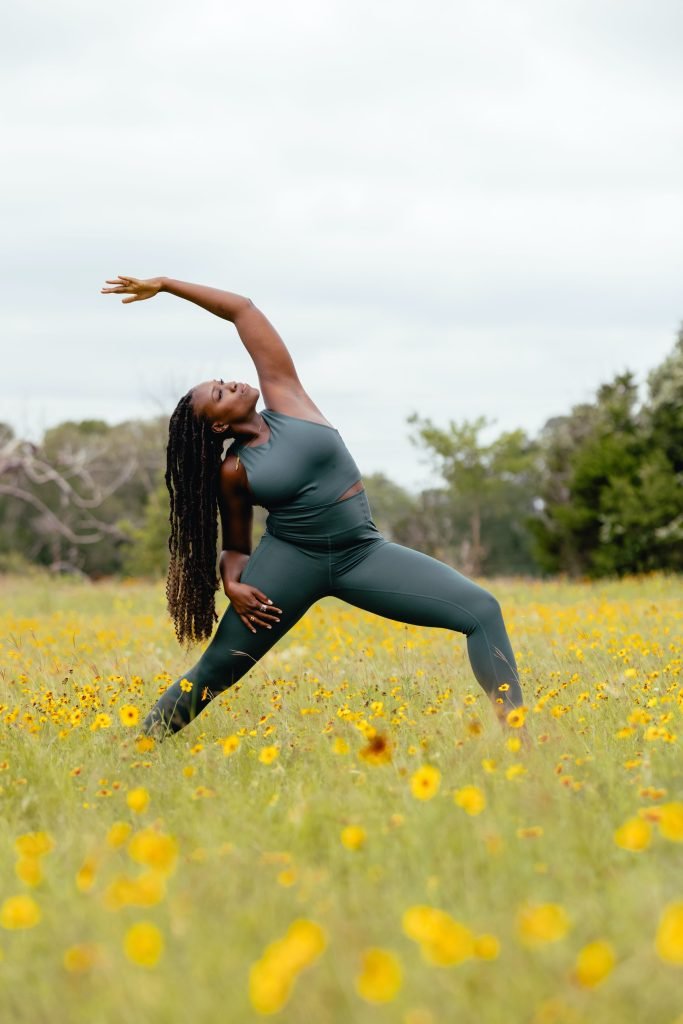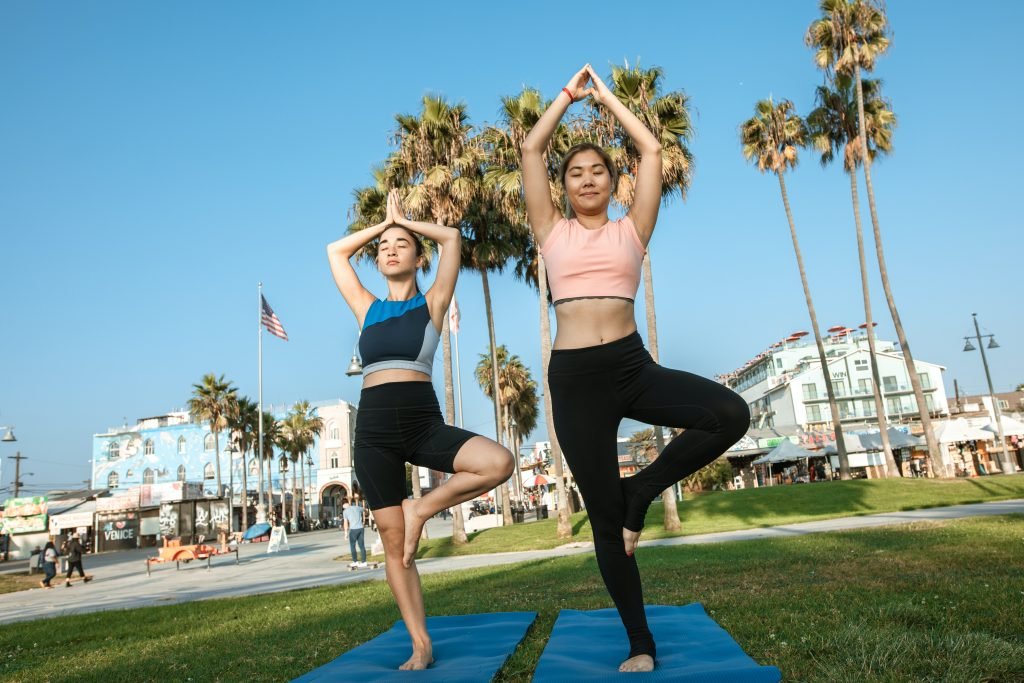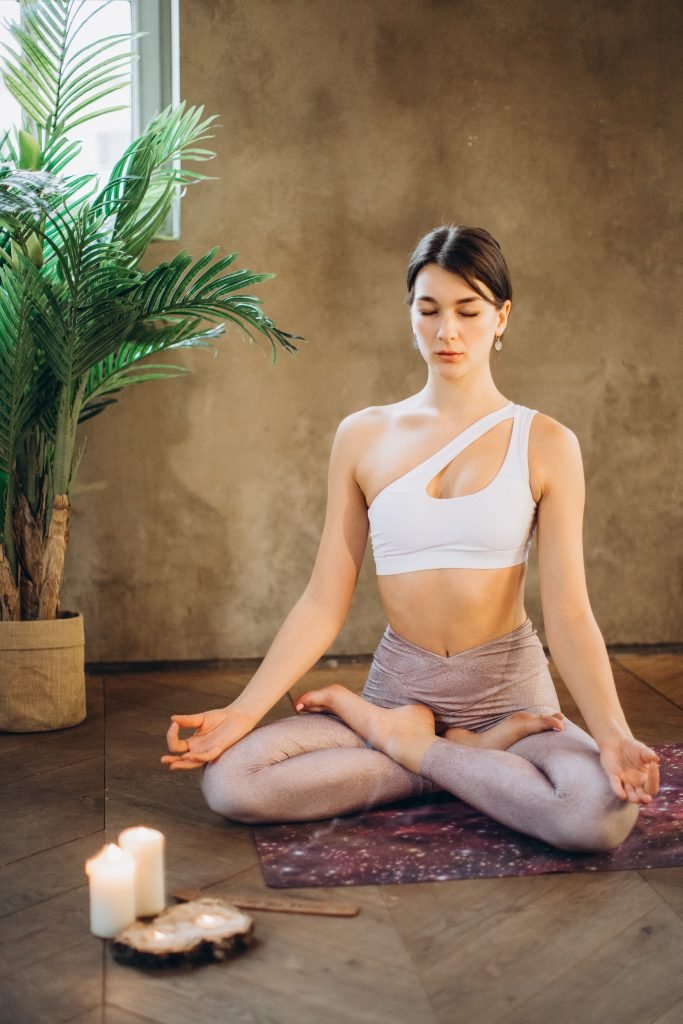Yoga and meditation a physical, mental and spiritual practice originating in ancient India. It combines physical postures, breathing techniques and meditation to promote physical strength, flexibility, mental clarity and mental well-being.
There are many different styles of yoga, each with its own unique focus and approach. Some of the most popular styles are Hathayoga, Vinyasayoga, Bikramyoga and Ashtangayoga. I have practiced and highly recommend Kundaliniyoga myself
Yoga has been shown to have numerous health benefits, including reduced stress and anxiety, very positive effects on the cardiovascular and nervous systems, and increased flexibility and strength. It is also often used as an adjunct to psychological therapy, helping to manage chronic pain, depression and other conditions that make our daily lives miserable.

An important part of practicing yoga is meditation itself, which in itself brings positives, as you will read about in later sections of the article.
Although yoga has its roots in Hinduism, it is a non-religious practice, accessible to all regardless of religion or belief. It can be practiced in the studio under the guidance of an instructor, or you can easily practice it yourself at home with online classes or videos.
The benefits of practicing yoga regularly are:
- Increase flexibility and muscle strength: yoga is a very good “workout” in which many positions require the use of muscles in an “unusual” way which improves their functioning, motor skills and strength
- Improving balance and coordination: Yoga can be used to improve balance and coordination. Many positions and exercises positively improve motor coordination and balance and equilibrium of the whole body
- Reducing stress and improving mental health: Yoga is often used as a relaxation technique because it benefits mental health, helping to reduce stress and anxiety levels and balance the mental spirit
- Improving the quality of sleep: practicing yoga regularly can help improve the quality of sleep, which is especially important for people suffering from insomnia, but also not only
- Improving cardiovascular health: Studies have shown that yoga can be used to improve cardiovascular health and reduce the risk of cardiovascular disease.
- Improving concentration and decision-making skills: Yoga can be used as a meditation technique to help improve concentration and decision-making skills.
- Reducing pain and stagnation of muscles and joints: Through regular exercise, and properly selected postures, yoga can be used to reduce pain and stiffness in various parts of the body, with a particularly positive effect on the spine and joints that are rarely used on a daily basis.
- Improving well-being and quality of life: Overall, regular yoga practice can help improve well-being and quality of life by bringing balance between mind, body and spirit.
An integral part of yoga is meditation, which helps develop the ability to focus and awareness, which translates into making better decisions and dealing with life’s challenges. Through meditation, yoga can help you discover and develop inner balance, as well as develop a sense of peace and happiness. Regular practice of yoga allows you to understand yourself, your body, as well as your emotions

PRACTICE
Practicing yoga can include various elements, such as body positions (asanas), breathing techniques (pranayama), meditation, mantras and other spiritual practices. Below I would like to introduce you to some tips for practicing yoga:
- Choose a style of yoga that suits your needs and goals: There are many styles of yoga, and each has its own qualities and advantages. Choose a style in which you feel comfortable and best
- Find a good yoga teacher/instructor: Yoga is a practice that requires mindfulness and precision, so it’s a good idea to learn from an experienced person who will be able to help you achieve your goals – although this is not a prerequisite
- Make sure you have the right equipment: Practicing yoga requires small equipment such as yoga mats, blocks, straps and a blanket. Make sure you have the right equipment to perform yoga positions safely and effectively.
- Remember regularity: Regular exercise and yoga practice brings the best results, so try to practice yoga several times a week, preferably every day.
- Train with your head, nothing by force: Yoga practice should be done in moderation and according to your body’s capabilities. Listen to your body and don’t overload yourself. It is not worth overloading yourself to not train for a long time afterwards due to exhaustion, or worse, injury or trauma
- Train for yourself: Yoga is worth practicing with pleasure and interest. Remember that yoga is a path, not a destination, and that you can learn a lot about yourself and your body every day.
MEDITATION:
Meditation is a practice that aims to achieve a state of focus, calmness and inner balance by focusing attention on a specific object or thought process. Practiced for centuries in various religious and spiritual traditions, meditation has become popular as a relaxation technique and a tool for self-improvement.
There are many different types of meditation, but most involve three basic elements: focusing attention, controlling the breath and relaxing the body. During meditation, you can focus on a specific object, such as a breath, sound, image or phrase, or simply on your thoughts and feelings.

Meditation can have a positive impact on mental and physical health, by reducing stress, improving the ability to concentrate, reducing anxiety and depression, improving sleep quality and reducing muscle pain and stiffness. It can also help develop a sense of calm and balance, which can help deal with life’s daily challenges.
If you want to start meditating, you can easily try it on your own, as I did, for example, or get help from a meditation instructor or even a suitable meditation app. Meditation is a practice that takes time and patience, but regular practice can lead to significant mental and physical health benefits. Here are some of the positive effects of meditation:
- Stress reduction: Meditation is known for its anti-stress effects. Practicing meditation can help reduce levels of cortisol, the stress hormone, in the body.
- Improving sleep quality: Meditation can help improve sleep quality by reducing stress and improving relaxation.
- Improving concentration skills: Practicing meditation can help you develop your ability to focus and pay attention, which can help you make better decisions and deal with life’s challenges.
- Improve mood and reduce anxiety: Meditation can help reduce anxiety and improve mood by reducing cortisol levels and increasing endorphins.
- Improving physical health: Practicing meditation can help reduce pain, reduce inflammation, lower blood pressure, and strengthen the immune system.
- Increasing a sense of calm and balance: Meditation is a practice that can help you develop a sense of calm and balance, which can help you cope with life’s daily challenges.
In conclusion, yoga and meditation undeniably have a positive effect on our health and the state of our soul. Regular practice relaxes us, develops us and calms us down. Our body will thank us when we introduce regular practice of yoga and meditation 😉
Check out more tips here if you want to work on yourself and your health.
Follow me on my social media.
